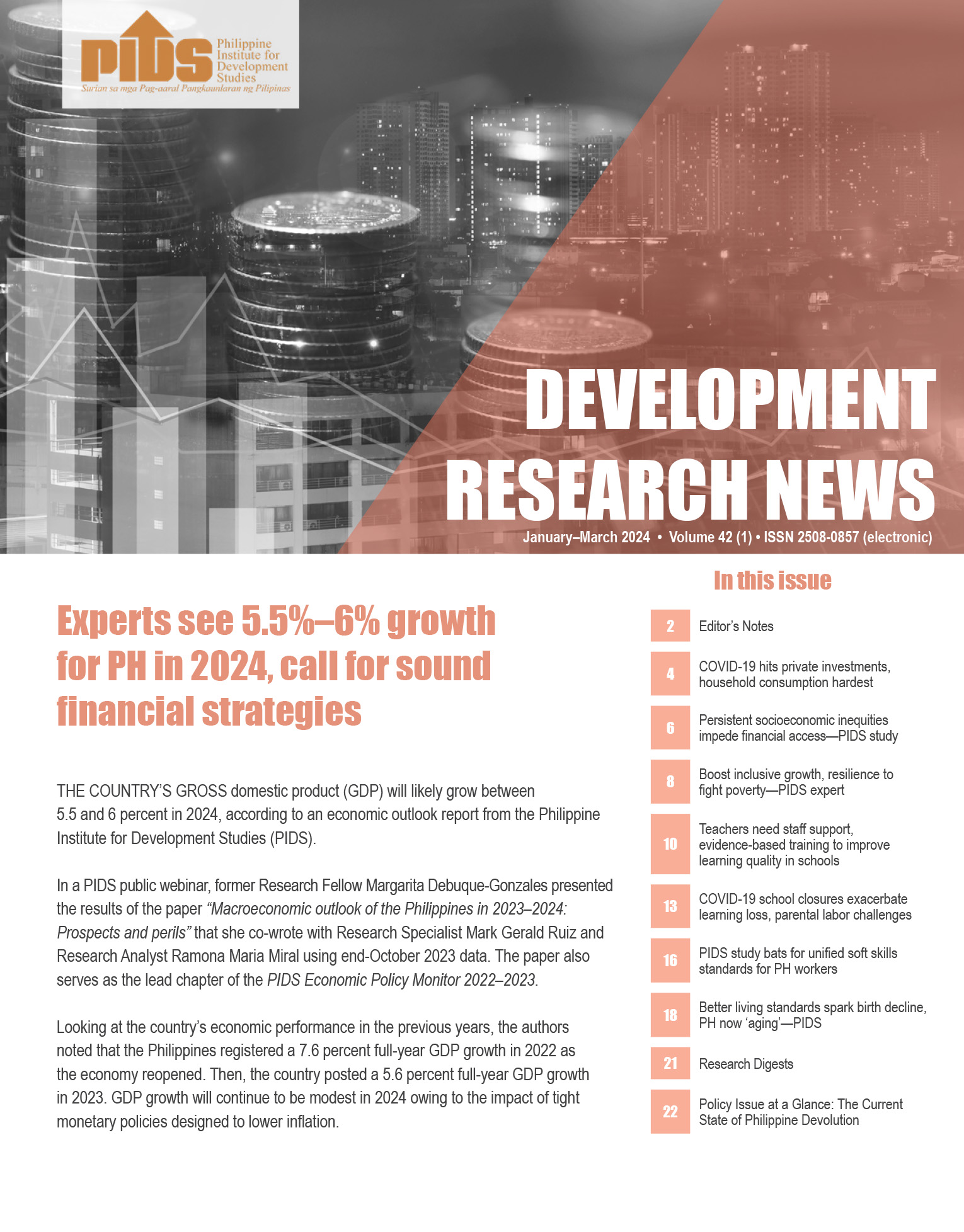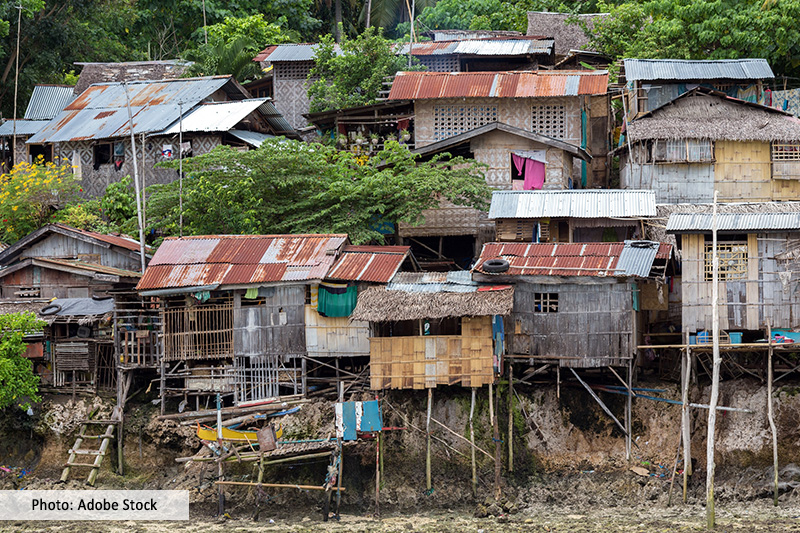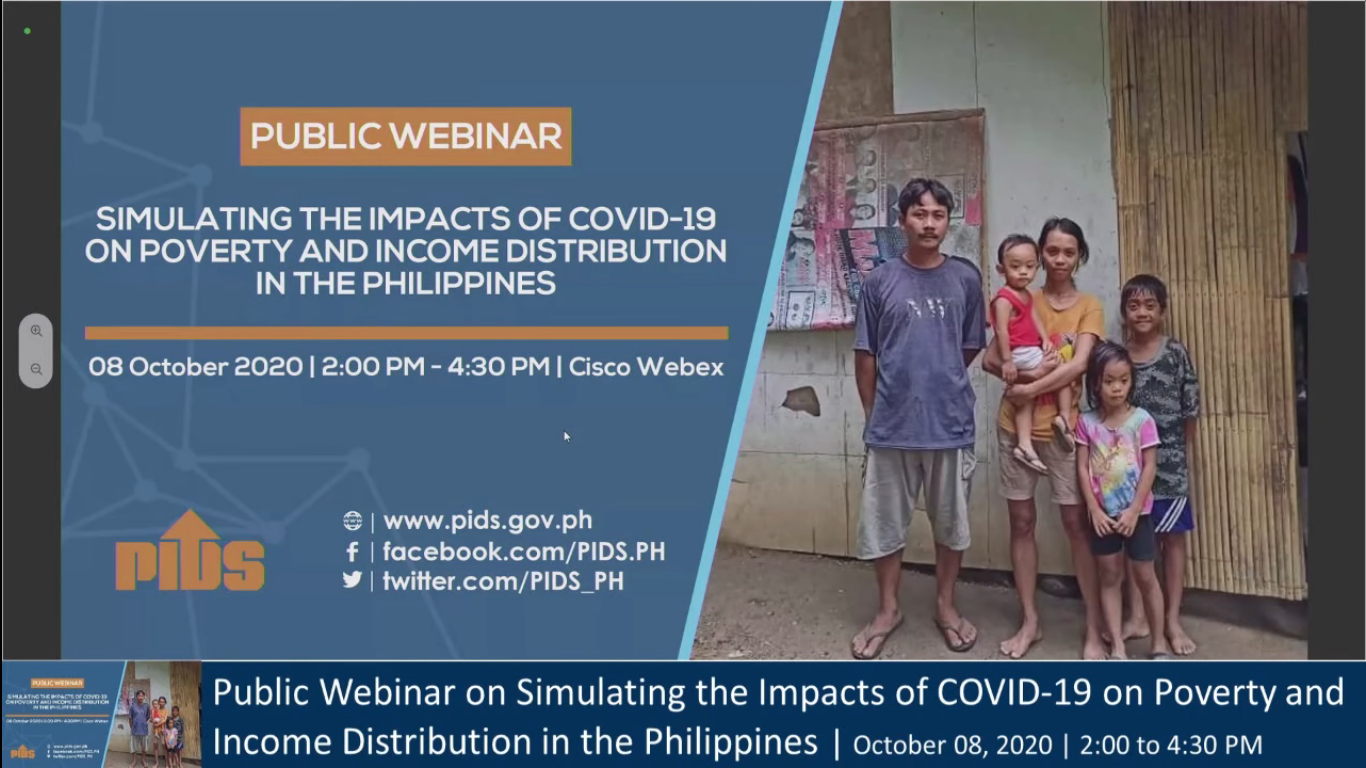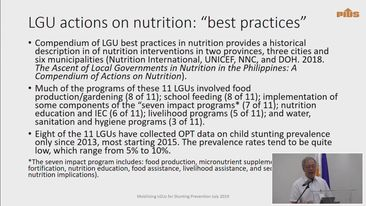Even the state-owned think tank Philippine Institute for Development Studies (PIDS) branded as inaccurate President Aquino’s claim that the poverty level in the country is on a downtrend as it noted the change in the formula used for determining the data.
In a study, PIDS noted that the Philippine Statistics Authority (PSA), in its official estimated poverty figures for the first half of 2013, reported 24.9 percent of Filipinos were poor in the first semester of 2013 based on the 2013 Annual Poverty Indicator Survey (APIS).
Aquino had often used the poverty estimate to prove the economic conditions of Filipinos are improving and even attributed the reduction in poverty to the impact of the government’s version of the conditional cash transfer program, Pantawid Pamilyang Pilipino Program.
Even the World Bank, in its August 2014 issue of the Philippine Economic Update, similarly described improving poverty conditions using the data.
In a policy note that PIDS
released, its authors argued that while these descriptions of poverty are based on official statistics, the April 2014 press release of the PSA did not actually report a "drop” in poverty incidence from 2012 to 2013.
"PSA mentioned that 24.9 percent of Filipinos were poor in the first semester of 2013, and that in the same period in 2012, poverty incidence among Filipinos based on the 2012 Family Income and Expenditure Survey (FIES), was recorded at 27.9 percent,” PIDS Senior Research Fellow Jose Ramon Albert and co-author Arturo Martinez in "Is poverty really decreasing? And if not, Why not?”
But isn’t 24.9 percent a decline from 27.9 percent?
"Seemingly, yes, but in this case, no. To compare statistics, their methodologies should be equivalent,” Albert explained.
The PSA’s technical notes stated that the source of poverty data on the first half of 2013 is the 2013 Annual Poverty Indicator Survey (APIS), a nationwide sample survey designed to provide information on the different indicators related to poverty and uses a different questionnaire from that of the 2012 FIES.
Former budget secretary Benjamin Diokno raised the same argument to disprove the Aquino’s claim of poverty reduction under his term.
In a Labor Day speech last year, Aquino said the poverty incidence has improved by three percentage points which he claimed to have been the result of his policies using the "tuwid na daan” dictum.
The figures were compared with the 27.9 poverty incidence based on the 2012 FIES.
"The two numbers are not exactly comparable,” according to Diokno.
He said the APIS was based on a smaller sample (10,864 respondents) and shorter questionnaire (32 pages, 6 pages on expenditure and 19 pages on income) while the FIES has a sample size of 42,618 and a lengthier questionnaire (78 pages, 47 pages for expenditure and 24 pages on income).
Diokno said since the APIS results are based on a small sample, it does not give the overall poverty picture for the entire country.
"It cannot be used to analyze regional and provincial poverty incidence. The FIES results, on the other hand, allows a more detailed poverty picture, down to the provincial level, and hence allows more focused and pinpointed policy intervention,” he added.
He added the poverty threshold used in the APIS study appears unreasonably low.
Based on the state statistics office, in the first semester of 2013, a family of five needed at least P5,590 on the average every month to meet the family’s basic food needs and at least P8,022 on the average every month to meet both basic food and non-food needs.
"These amounts represent the monthly food threshold and monthly poverty threshold, respectively. They indicate increases of about 2.4 percent in food threshold and 2.6 percent in poverty threshold from the first semester of 2012 to the first semester of 2013,” he said
The PIDS study explained that although the 2013 APIS used more questions on income (than it used to) with its 19-page questionnaire, the 2012 FIES income module used 24 pages of questions. And even if APIS 2013 made use of the 24-page income module of FIES 2012, this would still not make poverty data from the APIS and FIES comparable since FIES also asks households detailed information on their expenditures before income questions are asked using a total of 78 pages of questions.
The FIES interview could take an average interview time of five hours.
The APIS 2013 questionnaire had six pages of questions on expenditure, aside from 19 pages of income questions, and several pages of other questions, which, overall, took three hours to accomplish.
"We therefore do not have clear evidence to suggest a reduction in poverty from the first half of 2012 to the first semester of 2013. To get definitive recent trends on income poverty, we have to await the results of the 2014 APIS,” the PIDS study said.
Historically, however, poverty rates have been unchanged. Based on the latest available figures from FIES, the researchers observed three clear trends on poverty conditions.
First, poverty rates have been unchanged in the first semester periods from 2006 to 2012, since minute differences in estimates are within margins of error. Secondly, poverty rates also have been unchanged in the full year periods from 2006 to 2012, and thirdly, estimates of the proportion of Filipinos who are poor are lower in the full year, compared with first-semester figures, on account of extra income received from thirteenth month wages and bonuses, and other income received in the second semester.
"Since poverty rates are unchanged, the number of poor Filipinos is increasing on account of population growth,” the researchers noted.
Furthermore, they pointed out a barely changing income inequality, a pattern that could mean that the new opportunities created by economic growth do not allow the income of the poor to catch up with the rest.
They also pointed out that although poor Filipinos were more likely to experience higher income growth, some nonpoor also have been vulnerable to slide into poverty.
Thus, they noted that the government should not only be concerned with the poor, but also with the nonpoor who are plagued by economic risks, in designing the country’s social protection infrastructure.
"Policymakers should need to develop policies for risk management such as adequate social insurance and social protection coverage. It is also important to monitor and evaluate the effectiveness of these programs because if left unaddressed, income shocks may hamper the thrust for inclusive growth and for sustained prospects of the country’s development,” the PIDS study said.
Even if the figures Aquino used is accurate, a poverty level of 24.9 percent means 25 out of 100 Filipinos are poor which puts the Philippines the only country among the six biggest Association of Southeast Asian Nations (Asean) members (Indonesia, Malaysia, Philippines, Singapore, Thailand, and Vietnam) having the highest poverty incidence, Diokno said.//












